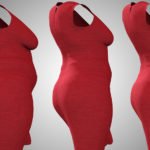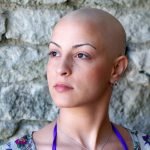Bathing your baby should be a safe and wholesome experience, but a new report makes clear that bath-time could be hazardous to your tot’s health. According to the report, issued by the Campaign for Safe Cosmetics (CSC), over 80 percent of the baby products they tested contained at least one carcinogenic agent.
The group screened 48 popular baby products for formaldehyde and 1,4-dioxane — both listed as probable carcinogens by the EPA. Sixty-one percent of the tested products contained both of these contaminants, 82 percent contained formaldehyde, and 67 percent had 1,4-dioxane. And we’re not talking about obscure products sold only in rural discount stores — the list of affected products included such staples as Johnson’s Baby Shampoo, Huggies Wipes, Pampers Baby Fresh, and Baby Magic Lotion.
Formaldehyde and 1,4-dioxane typically occur as byproducts of the manufacturing process or when added preservatives break down. Because the FDA doesn’t regulate personal care or cosmetic products, manufacturers only need to list ingredients on product labels — they don’t need to list the contaminant content. Also, the agency doesn’t set allowable limits for toxins in baby care or cosmetic products; nor does it systematically review the safety of any such contaminants. And since the labels aren’t required to tell the full story, you might wonder what other toxins your favorite products contain. In fact, The Environmental Working Group has found 146 ingredients commonly used in personal care products that may be linked to cancer and other serious diseases. The report notes that, “Many of these products also contain other ingredients with known or suspected links to cancer or other serious health problems — showing that, unbeknownst to most parents, harmful chemicals in the bath may be adding up.”
Rather than apologize or promise to look into the issue of carcinogens in their products, the manufacturers responsible for selling the contaminated baby goods jumped into defensive mode, defending their right to bathe babies in toxins. “The FDA and other government agencies around the world consider these trace levels safe, and all our products meet or exceed the regulatory requirements in every country where they are sold,” Johnson & Johnson said in a statement. “We are disappointed that the Campaign for Safe Cosmetics has inaccurately characterized the safety of our products, misrepresented the overwhelming consensus of scientists and government agencies that review the safety of ingredients, and unnecessarily alarmed parents.”
The Personal Care Products Council, a group comprised of manufacturers, concurred. “Allegations that commonly used baby products are somehow contaminated with harmful levels of carcinogenic chemicals are patently false and a shameful and cynical attempt by an activist group to incite and prey upon parental worries and concerns in order to push a political, legislative, and legal agenda.”
Apparently, the authors of the above indignant statements chose to disregard the fact that both the European Union and Canada have banned 1,4-dioxane from all personal care products because it is deemed unsafe at any level. Also, they ignore the fact that even if one baby product contains only trace amounts of a toxin, using several different products can up the amount to levels deemed unsafe even by the lenient regulatory agencies — and since most products these days contain these carcinogens, the cumulative impact indeed is something to worry about. Plus, there’s the possibility that combinations of the various contaminants within a product can have a more harmful impact than just one agent in isolation. There’s also the fact that many of the products tested contained amounts of the carcinogens that did indeed exceed the so-called safe threshold. For instance, two samples of Baby Magic had such high levels of formaldehyde that they would require a warning label in Europe. Finally, there’s the assumption that it’s safe to expose babies to these carcinogens at trace levels — a hypothesis that hasn’t been tested.
As report author Stacy Malkan says, “The … industry often says there’s just a little bit of carcinogen in my product. The problem is, we’re finding a little bit of carcinogen in many products. Many of these products are used every day, so we’ve got repeated and frequent exposure to these low levels of chemicals. They’re not the safest and purest products, and parents ought to know that.”
Why would industry groups push back so vehemently when it’s quite obvious that carcinogens in baby products are a horrifying no-no? After all, 1,4-dioxane in particular is easy to remove from products at a relatively low cost by a process called vacuum stripping. It would seem that the industry moguls are unwilling to cut profits one bit, even if doing so would protect millions of consumers and babies. Or perhaps they’re afraid that to admit guilt and reformulate their products now would open them up to a veritable flood of lawsuits — again, a financial concern.
In the meantime, you can protect yourself and your family by screening labels for ingredients that typically lead to formaldehyde and 1,4-dioxane formation. These ingredients include quaternium-15, DMDM hydantoin, imidazolidinyl urea, PEG-100 stearate, sodium laureth sulfate, polyethylene, ceteareth-20 and diazolidinyl urea.
Also, check out the Environmental Working Group’s ratings of personal care products — but prepare to be shocked when you actually see the safety ratings of your favorite organic shampoos, deodorants, lotions, and baby-care items.
:hc












This kind of thing really
This kind of thing really concerns me. The government does surprisingly little to protect us from big business. I was reading about the links chemicals have to cancer, endometriosis and myriad other health problems on whole health web dot com and it can be distressing.
This is so upsetting that this country doesn’t care about our health. Our poor babies don’t even have a good start in this infected world.
If there is anything that I could do as voting against this, please let me know.
Thank you very much John, for helping to make people more aware of this issue.
We’ve been informing people about this situation for over 10 years now. Our company had higher than EU standards since it was founded in 1990. An infant’s skin is much more permeable than an adult’s so even the slightest amount of toxins can jeopardize their health in some way.